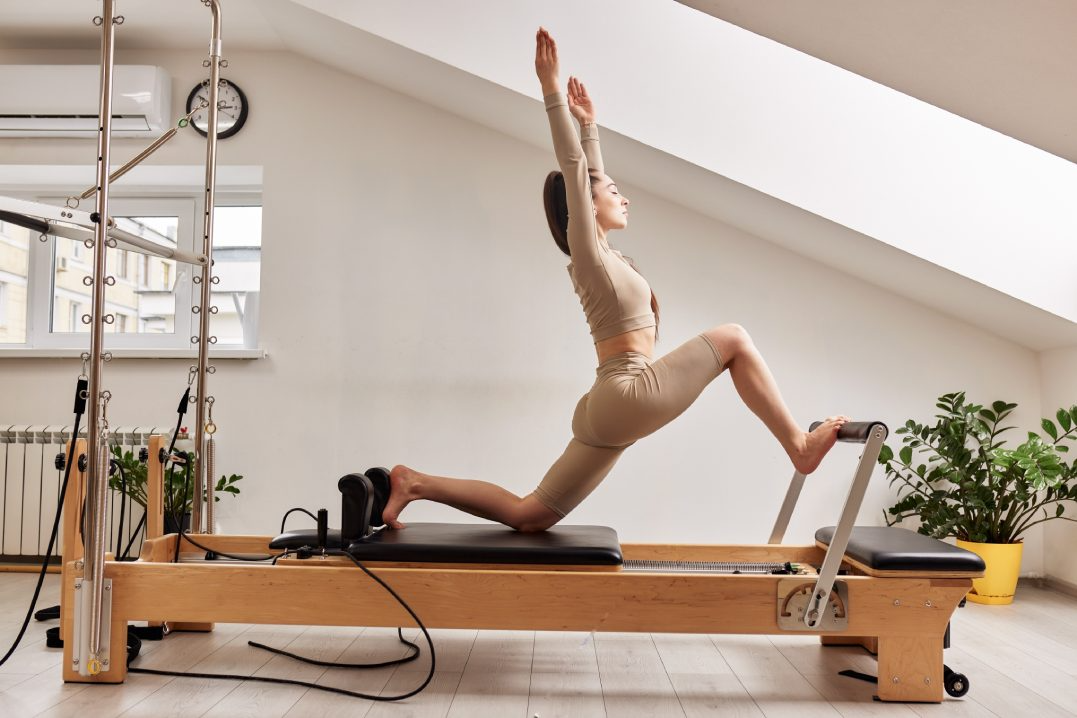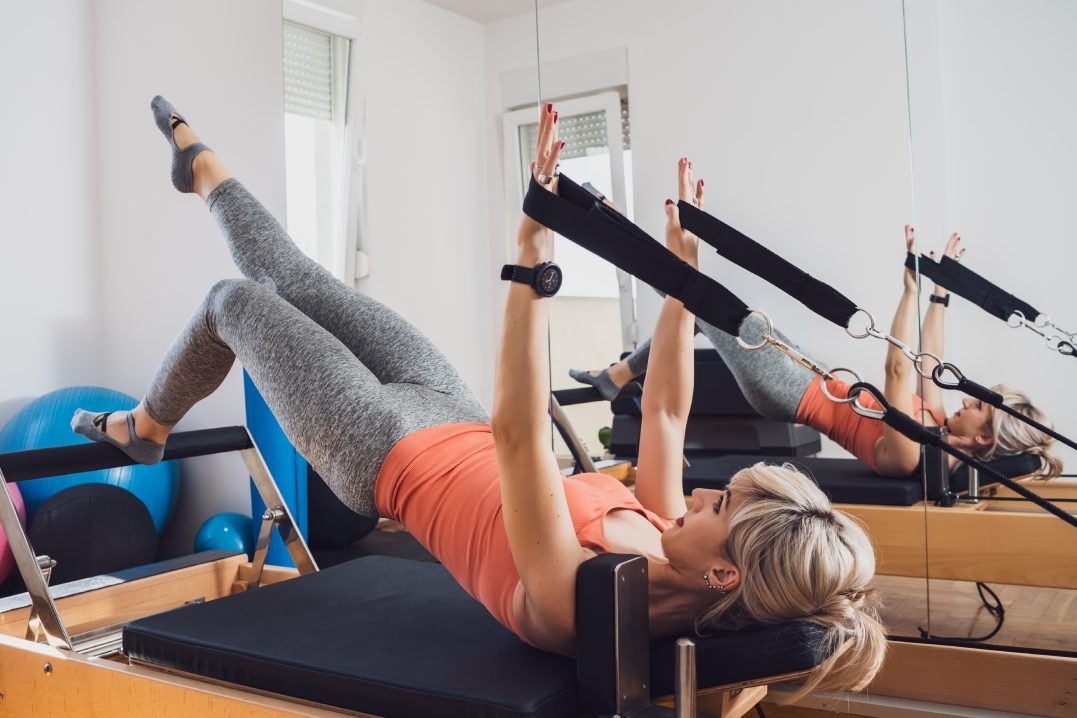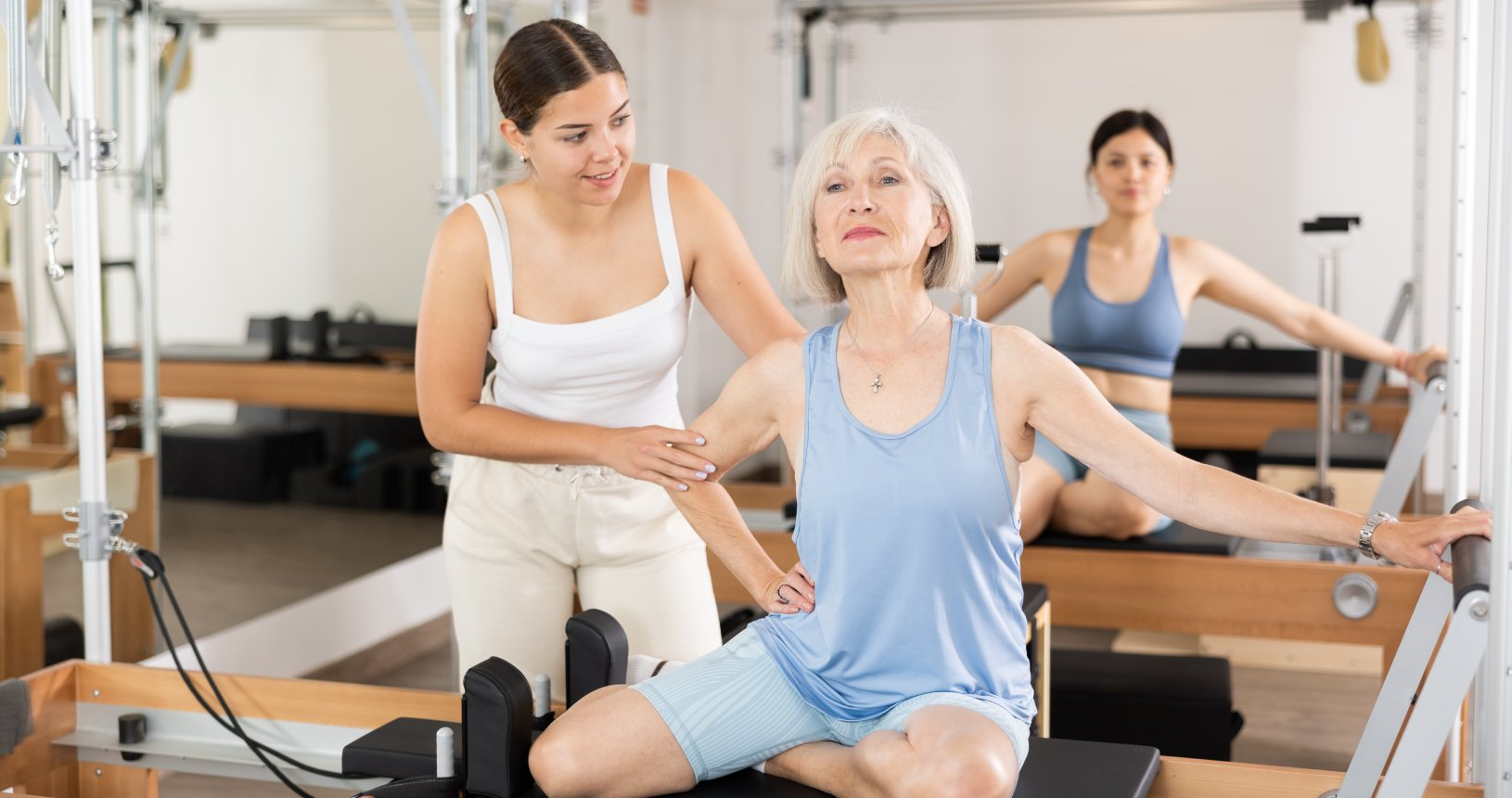For beginners looking to venture into fitness, Pilates has become a globally recognized choice due to its numerous benefits. This low-impact exercise method offers a holistic approach, enhancing both physical and mental well-being, making it an excellent starting point for beginners. It serves as an exceptional initiation into activities like strength building, flexibility boosting, and promoting a sense of balance.
But what if we tell you that there’s a unique and even more tailored version of Pilates that can elevate your fitness journey to a whole new level?
Welcome to the world of Reformer Pilates, a fantastic exercise system that could be the key to unlocking your body’s full potential and achieving a stronger, healthier body. If you’re new to this special type of Pilates exercise, read on as we explain essential tips and steps for Reformer Pilates for beginners.
The Pilates Craze

Before we delve into the world of Reformer Pilates, it’s worth celebrating the phenomenal rise of Pilates itself. Developed by Joseph Pilates in the early 20th century, this practice has garnered a dedicated following globally. Its growing popularity is not merely a trend but a testament to the effectiveness of the method. Pilates is renowned for sculpting long, lean muscles, improving posture, and enhancing overall physical strength.
What makes Pilates stand out is its emphasis on the core – the powerhouse of the body. By working on your core muscles, Pilates creates a strong foundation that radiates strength and stability to the rest of your body. The exercises are designed to be gentle on your joints, making it accessible to people of all fitness levels.
Introducing Reformer Pilates for Beginners
Now, let’s take a closer look at Reformer Pilates, a special and highly versatile branch of Pilates exercise. It’s a bit different from regular Pilates as it uses a specialized machine called a Pilates Reformer. This machine is ingeniously designed to support and challenge your body through a series of controlled movements.
What is the Pilates Reformer Machine?
The Pilates Reformer is a piece of exercise equipment used in Pilates workouts to enhance strength, flexibility, coordination, and balance. It consists of a frame with a sliding carriage that moves back and forth on rails. The carriage is connected to springs, ropes, and pulleys, which provide resistance and support for various exercises.
The sliding carriage is where you sit, lie, kneel, or stand to perform various exercises. It has padding for comfort and is equipped with straps or handles you can hold onto during exercises. The springs provide resistance as you push or pull the carriage along the rails, while pulleys and ropes are used to manipulate the resistance and movement of the carriage. They allow for smooth and controlled motion during exercises. The ropes are adjustable in length to accommodate different exercises and body positions.
Benefits of Reformer Pilates for Beginners

While traditional Pilates mat exercises are incredibly effective, the Reformer adds an extra dimension by providing adjustable resistance, allowing for a more customized and tailored workout. The Reformer’s sliding carriage and various attachments enable an extensive range of exercises, making it a dynamic and adaptable choice for individuals of all fitness levels.
Reformer Pilates is also known for its emphasis on precision and controlled movements. It’s often used in conjunction with Pilates principles such as breathing, concentration, centering, control, precision, and flow.
Now, let’s discuss five invaluable tips to help beginners start on the right foot with Reformer Pilates.
Tip 1: Find a Qualified Instructor
Can you get into Reformer Pilates without any instructor or professional guidance? Technically, yes. With online resources, tutorials, and access to a reformer machine, you can learn the proper exercise techniques even without a dedicated instructor.
But do we recommend this approach? Not at all.
Reformer Pilates, like traditional Pilates, places a strong emphasis on precision and proper form. A qualified instructor is not just someone who demonstrates exercises but a professional who can assess your needs, tailor the exercises to your abilities, and correct your form in real-time. They guide you through the movements, ensuring you get the most out of each session while minimizing the risk of injury. So, the guidance of an instructor is particularly crucial for beginners.
Tip 2: Dress Comfortably
Comfort is key when it comes to Reformer Pilates. Wear clothing that allows for free movement, like breathable workout wear. Feeling comfortable in what you’re wearing is essential to fully focus on the exercises. There is no need for fancy outfits – just make sure you can move easily.
Moreover, avoiding jewelry, belts, or anything that might get in the way during your session is advisable. Such accessories can obstruct free and fluid movements and cause discomfort during the exercise. Thus, comfortable apparel is not just a matter of aesthetics or convenience but an essential factor that will also impact the effectiveness of the exercise.
Tip 3: Start Slow and Gradual
As a beginner, it’s vital not to rush into complex exercises. Begin with the basics and build a strong foundation. Pilates Reformer machines can be intimidating at first, with their various components and moving parts, but with time and practice, you’ll become more confident.
Start with the fundamental movements, focusing on proper form and control. Once you’ve mastered these, you can gradually progress to more challenging exercises. This approach prevents potential injuries and ensures that you build a strong base of strength and flexibility. Pilates is quite an extensive exercise, so if you overexert yourself, you will likely injure yourselves, doing more harm than good.
Tip 4: Consistency is Key
Reformer Pilates is most effective when practiced regularly. Aim for at least 2-3 sessions per week to see significant improvements in your strength, flexibility, and overall fitness. Consistency will help your body adapt and progress.
It’s worth noting that Pilates is not a high-intensity workout. Instead, it’s about precision and control. This means that your body will benefit from regular practice, but you won’t experience the same muscle soreness as with other workouts. This can particularly appeal to those who want to avoid extreme post-workout discomfort.
Tip 5: Listen to Your Body
It’s essential to listen to your body throughout your Reformer Pilates journey. If you experience pain or discomfort during an exercise, stop and inform your instructor. Pushing through pain is not the Pilates way – it’s all about working with your body, not against it.
Instructors can modify exercises if you have any physical limitations or injuries. So don’t be afraid to ask for adjustments and any other assistance you require from your trainer. It’s better to modify and progress gradually than to risk injury.
That said, Reformer Pilates offers a unique and tailored approach to fitness, taking the well-established principles of traditional Pilates to a whole new level.
With dedication, the right approach, and following the beginner tips we have explained, you can slowly but surely familiarize yourself with the Reformer Pilates exercise and enjoy its numerous health benefits. If you want to learn more about Reformer Pilates or schedule an appointment, contact In Touch NYC Physical Therapy today.



